Installing a filler strip on cabinets is a practical solution for closing gaps between cabinet units or between a cabinet and a wall, creating a seamless and cohesive look in your kitchen or bathroom.
Filler strips are commonly used to fill in spaces where standard-sized cabinets may not fit perfectly or to accommodate irregularities in the wall or floor. Whether you’re installing new cabinets or updating existing ones, knowing how to install a filler strip correctly is essential for achieving a professional-looking result.
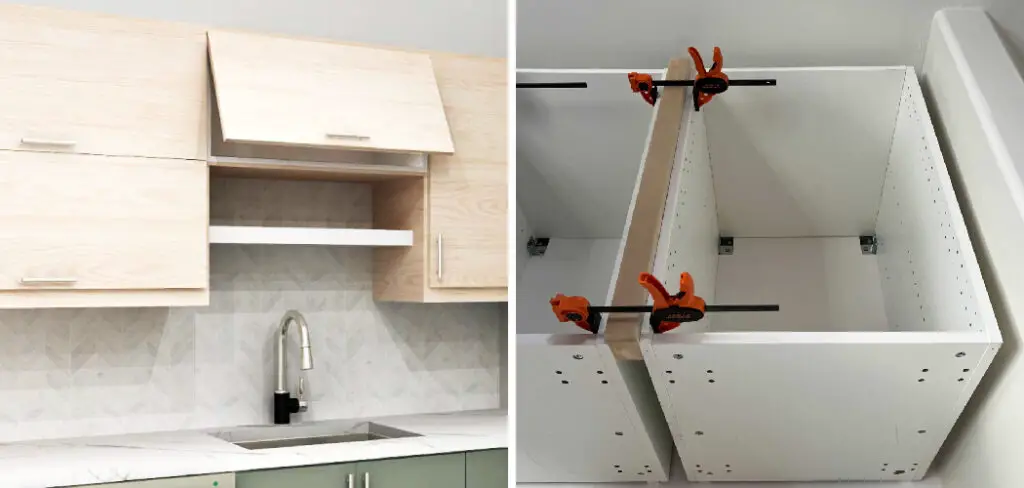
In this article, we’ll explore step-by-step instructions and expert tips to guide you through the process of how to install a filler strip on cabinets. From proper measurement and cutting to securing the strip in place, mastering these techniques will help you enhance the aesthetic appeal and functionality of your cabinetry with ease.
Definition and Purpose of Filler Strips
Filler strips are narrow pieces of wood or synthetic material designed to fill the gaps between cabinetry units and walls or between individual cabinet units themselves.
These strips are essential in customizing kitchen or bathroom spaces, making it possible to achieve a seamless look even when standard cabinet sizes do not perfectly match the dimensions of the room.
The primary purpose of filler strips is to cover any unsightly gaps that may occur due to the irregularities in wall shape, ensuring the cabinetry installation looks intentional and uniformly finished.
Additionally, filler strips can provide a buffer zone that prevents doors or drawers from banging into adjoining walls or fixtures, protecting the cabinet’s finish and enhancing its functionality. Understanding the role and importance of filler strips is a critical step in planning and executing your cabinetry project to professional standards.
Benefits of Using Filler Strips in Cabinetry
The benefits of incorporating filler strips into your cabinetry setup cannot be overstated. Firstly, filler strips allow for precise customization of kitchen and bathroom spaces, ensuring that every inch is utilized efficiently, leaving no awkward gaps or spaces.
This meticulous attention to detail contributes to a more organized and cohesive aesthetic that aligns with modern design standards. Secondly, by bridging the gap between cabinets and walls or appliances, filler strips significantly improve the functionality of your cabinets.
They eliminate the potential for items to fall between gaps, making your storage spaces more practical and easy to maintain. Furthermore, filler strips can enhance the durability of your cabinets.
By preventing direct contact with walls or other surfaces, they reduce wear and tear, ensuring that your cabinetry remains in pristine condition for longer. Finally, the use of filler strips offers a degree of flexibility in the installation process.
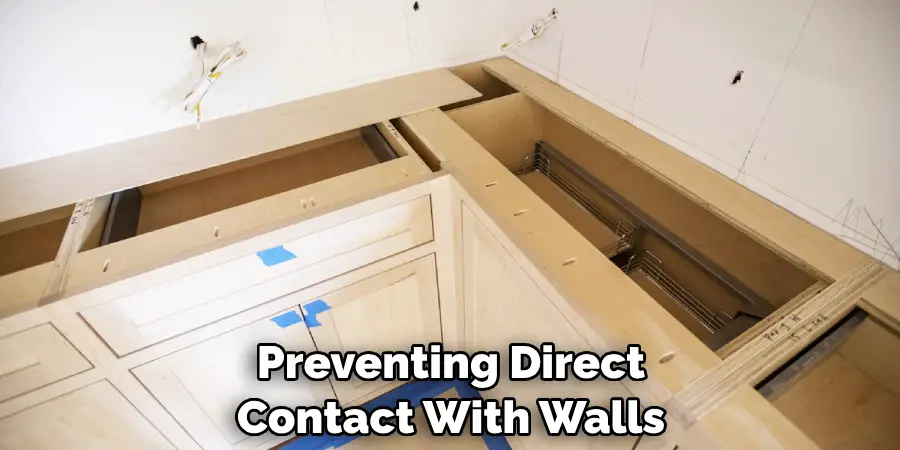
They can compensate for slight mismeasurements or imperfections in wall straightness, making the installation process more forgiving and less stressful. In essence, filler strips are not just practical; they are a vital component in achieving a polished, professional look in any cabinetry project.
Understanding Cabinet Structure and Requirements
Before you can successfully install a filler strip on your cabinets, it’s important to have a foundational understanding of the cabinet structure and the specific requirements for your installation project.
Cabinet sets are comprised of several components, including the carcass (the main body), doors, shelves, and hardware like hinges and drawer slides. The layout and specifics of your cabinetry might also include end panels, crown molding, and, of course, filler strips for aesthetic coherence and functional alignment.
The type of cabinets (stock, semi-custom, or custom) can significantly influence your approach to incorporating filler strips. Stock cabinets, being the most affordable and readily available option, come in predetermined sizes, which often necessitates the use of filler strips for a perfect fit within your space.
Semi-custom and custom cabinets offer greater flexibility in sizing, but even with these options, filler strips may be required to ensure a bespoke fit and finish, especially in rooms with irregular dimensions or walls that are not perfectly straight.
Requirements for a successful filler strip installation include:
- Accurate measurement of the gap needing to be filled to ensure the strip is cut to the correct size.
- Selection of the right material and finish for the filler strip to match or complement your cabinetry.
- Appropriate tools for measuring, cutting, and installing the filler strip, including a saw, drill, screws, and possibly adhesive.
- Understanding the anchoring system of your existing cabinets to securely attach the filler strip without causing damage.
A thorough assessment of the cabinet structure and the space where the installation will occur is crucial in preparing for the addition of filler strips. This ensures not only the functional integration of these components but also enhances the overall aesthetics of the room.
By taking the time to understand the specifics of your cabinetry and space requirements, you can achieve a seamless and professional-looking installation.
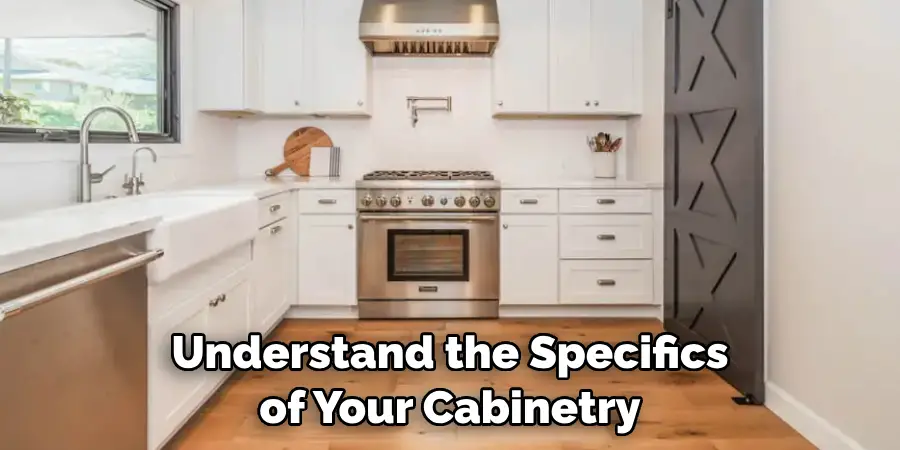
Identifying Cabinets Suitable for Filler Strips
Identifying which cabinets in your kitchen or bathroom are suitable for filler strips is a critical step in the customization process. Essentially, any cabinetry setup that involves installing cabinets against walls, beside appliances, or around corners can benefit from filler strips. Here are key indicators that suggest the need for filler strips in your cabinetry project:
- Gaps Between Cabinets and Walls: If there is a noticeable gap between the wall and your cabinet units due to wall irregularities or non-standard cabinet sizing, filler strips are your solution.
- Adjacent Appliances or Fixtures: Cabinets installed next to appliances or fixtures (like dishwashers, refrigerators, and ranges) often require filler strips to ensure there’s enough clearance for doors and drawers to open without interference.
- Corner Cabinets: Corner installations can sometimes create awkward spaces that are perfect candidates for filler strips, ensuring a smooth transition and making use of every available space.
- Varied Cabinet Sizes: In scenarios where stock or semi-custom cabinets are used, the preset sizes may not always align perfectly with the dimensions of your room, leaving gaps that can be aesthetically displeasing and functionally impractical.
- Customization Needs: Even with custom cabinets designed to fit your space, filler strips can be used intentionally for aesthetic purposes to create symmetrical lines or to accommodate design changes.
For a successful installation, it’s crucial to evaluate the spaces where cabinets will be installed to determine where filler strips are needed.
Taking precise measurements and considering the final look and functionality of the kitchen or bathroom will guide you in identifying the most suitable cabinets for filler strip integration. This proactive approach ensures that your cabinetry not only fits your space perfectly but also looks bespoke and tailored to your home’s aesthetics.
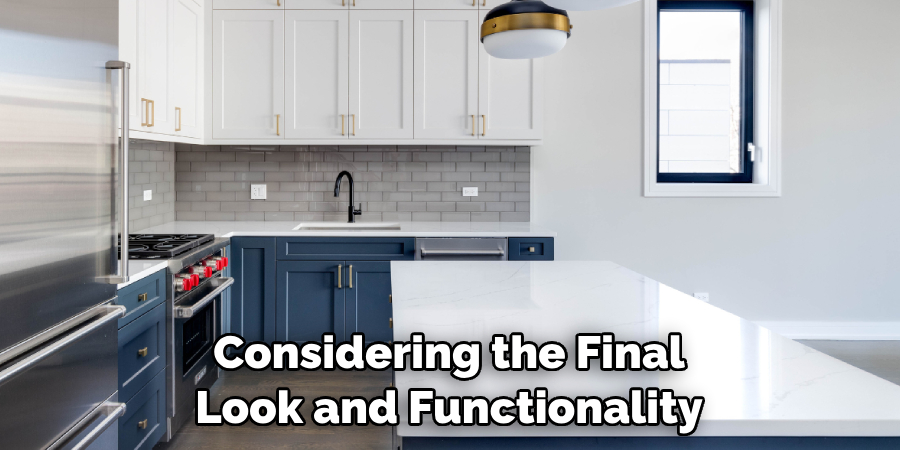
Measurement and Placement Considerations for Filler Strips
When integrating filler strips into your cabinetry project, precise measurement and strategic placement are crucial for achieving a flawless finish. The following steps outline the process for measuring and placing filler strips effectively:
- Initial Measurement: Begin by measuring the gap between the cabinet and the wall, appliance, or adjacent cabinet. Use a reliable tape measure and note the smallest width at various points since walls can be uneven. This ensures the filler strip fills the gap completely without being too tight or leaving space.
- Height and Depth: Measure the height and depth of the cabinet to ensure the filler strip will seamlessly align with the existing units. The filler strip should match the full height of the cabinet, from top to bottom, and the depth should correspond to the cabinet’s depth, though sometimes only front-facing alignment is necessary.
- Cutting the Strip: After determining the precise measurements, cut your filler strip to size. It’s advisable to cut a slightly longer piece than necessary; you can always trim it down for a perfect fit. Use tools appropriate for the material of your filler strip to ensure a clean, straight cut.
- Mock Placement: Before securing the strip, place it in the intended gap to verify the fit. This dry fit helps identify any adjustments needed and ensures the strip aligns correctly with the cabinet’s edges and faces.
- Fine-tuning: If the strip is too wide or tall, cautiously trim it down. A sander can be used to make minor adjustments and ensure a snug fit.
- Securing the Strip: Once satisfied with the fit, the strip can be attached to the cabinet or the wall, depending on the installation requirements. Ensure the strip is perfectly vertical (use a level) and secure it using the appropriate screws or adhesive. In some cases, the strip may be attached to the cabinet first, then the cabinet is secured to the wall.
- Aesthetic Touches: Lastly, add any necessary finishes to the filler strip, such as paint or stain, to ensure it blends seamlessly with the rest of the cabinetry. Depending on the installation, it might also be necessary to caulk the edges for a smooth transition.
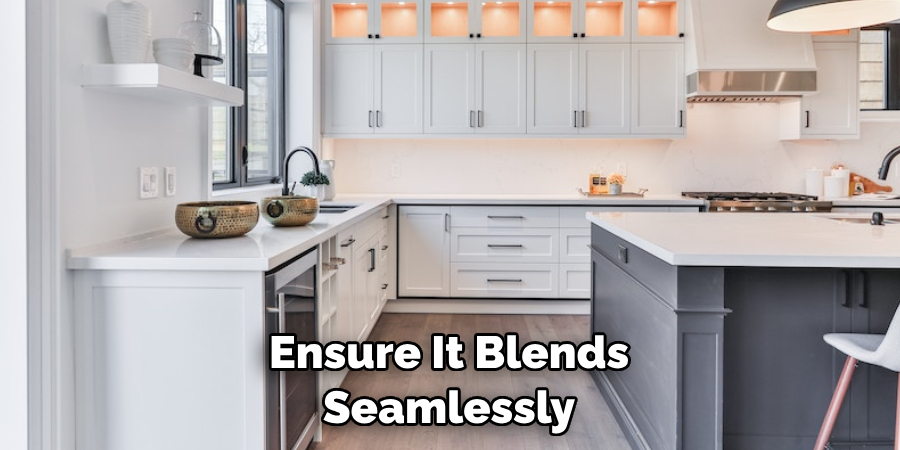
Proper measurement and placement are pivotal for the success of using filler strips in a cabinetry setup. Not only do they contribute to the aesthetic appeal by creating a continuous look, but they also enhance the functionality and longevity of your cabinets by filling unnecessary gaps.
Choosing the Right Materials and Tools
Selecting the appropriate materials for filler strips is critical for ensuring that they blend well with your existing cabinetry and withstand the test of time.
Filler strips can be made from various materials, including wood, MDF (Medium Density Fiberboard), and plywood, each offering different benefits and considerations. For a cohesive look, choose a material that matches or complements your cabinets’ finish and texture.
- Material Selection:
- Wood: Ideal for solid wood cabinets, offering durability and the option to sand, paint, or stain to match.
- MDF: A cost-effective option that’s easy to cut and perfect for painted finishes. However, it’s less resistant to moisture compared to wood.
- Plywood: Offers excellent stability and strength, making it suitable for areas with high humidity or where extra durability is needed.
- Tools for Measuring and Cutting:
- Tape Measure: Essential for accurate measurements of gaps and filler strip dimensions.
- Level: Guarantees that filler strips are perfectly vertical or horizontal when installed.
- Saw: A hand saw, circular saw, or table saw can be used, depending on the precision needed and the thickness of the material.
- Sander or Sandpaper: For finessing the edges of the filler strip for a flawless fit.
- Caulk Gun (if using adhesive): For securing the filler strip to the cabinet or wall.
- Installation Accessories:
- Screws or Nails: Select the appropriate length to secure the filler strip without damaging the cabinet or wall.
- Wood Glue or Adhesive: Offers additional stability, especially for wood and MDF filler strips.
- Paint or Stain: Match or complement your cabinet finish for a seamless appearance.
- Caulk: Seal any gaps between the filler strip and the wall or cabinets for a smooth transition.
Understanding the properties of different materials and having the right tools at hand are instrumental in achieving a professional look for your cabinetry project.
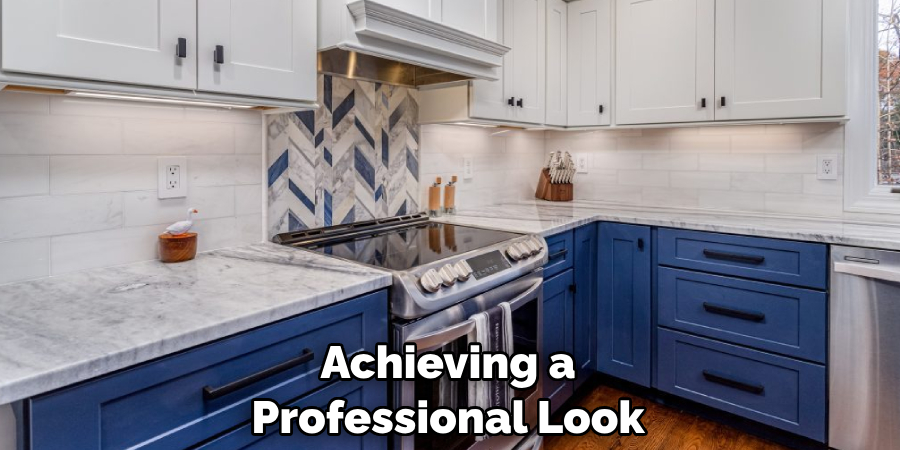
Take the time to carefully select materials that will not only fit the aesthetic of your space but will also offer durability and ease of installation. With careful planning and the proper materials and tools, you can ensure that your filler strip installation enhances the overall functionality and beauty of your cabinets.
10 Methods How to Install a Filler Strip on Cabinets
1. Measure the Gap:
Start by measuring the width and height of the gap where the filler strip will be installed. Use a tape measure to take accurate measurements, ensuring that the filler strip will cover the entire gap and fit snugly against the adjacent cabinets or wall.
It is important to measure at multiple points along the gap, as walls and cabinets may not be perfectly straight or level. This will ensure that the filler strip is cut to the correct size and will fit seamlessly into the space.
2. Choose the Filler Material:
Select the appropriate material for the filler strip based on your preferences and the existing cabinetry. Common options include wood, plywood, or laminate that matches the finish of the cabinets. Choose a material that is sturdy and easy to work with.
3. Cut the Filler Strip to Size:
Use a saw to cut the filler strip to the appropriate size based on the measurements you took earlier. Ensure that the strip is cut precisely to fit the dimensions of the gap, accounting for any irregularities in the wall or cabinet surfaces.
4. Sand the Edges:
Once the filler strip is cut to size, use sandpaper to smooth out any rough edges or imperfections. This will ensure a clean and professional-looking finish once the filler strip is installed. Start with a coarse-grit sandpaper and gradually work your way up to a finer grit for a smooth surface.
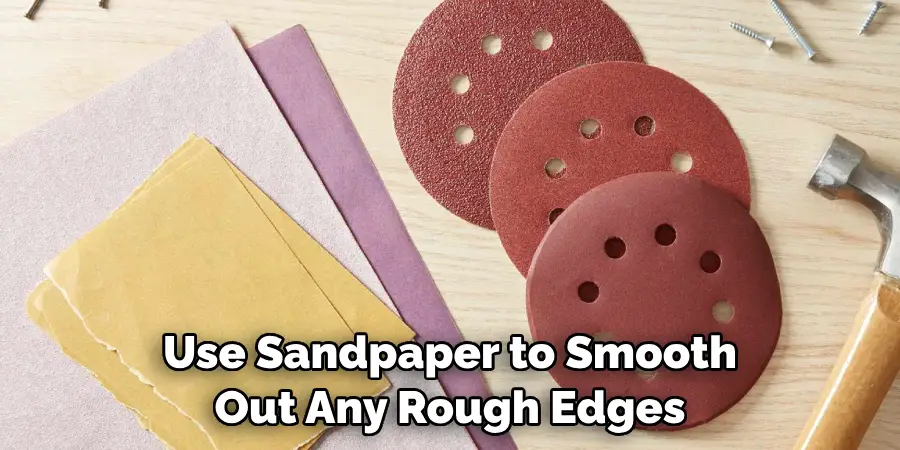
For the best results, sand in the direction of the wood grain. This will prevent any scratches or damage to the surface of the filler strip. Make sure to also sand along the edges and corners, as these areas tend to be sharper and may require more attention.
5. Position the Filler Strip:
Place the filler strip in the gap to ensure that it fits properly and aligns with the adjacent cabinets or wall. Make any necessary adjustments to the size or positioning of the filler strip to ensure a tight and seamless fit.
6. Secure the Filler Strip:
Use screws or nails to secure the filler strip in place. Position the screws or nails evenly along the length of the filler strip, ensuring that they are driven securely into the adjacent cabinets or wall to prevent any movement or shifting.
7. Fill Screw Holes:
If screws or nails were used to secure the filler strip, fill any screw holes with wood filler or putty. Use a putty knife to apply the filler, then sand it smooth once it dries to create a seamless surface.
8. Blend the Finish:
If the filler strip is made of a different material or has a different finish than the surrounding cabinets, take steps to blend the finish for a cohesive look. This may involve painting or staining the filler strip to match the existing cabinetry.
9. Install Trim or Molding (Optional):
To further enhance the appearance of the filler strip and create a finished look, consider installing trim or molding along the edges. This can help conceal any gaps or imperfections and provide a polished finishing touch.
10. Seal and Protect (Optional):
If desired, apply a clear sealant or finish to the filler strip to protect it from moisture, stains, and other damage. This will help prolong the life of the filler strip and maintain its appearance over time.
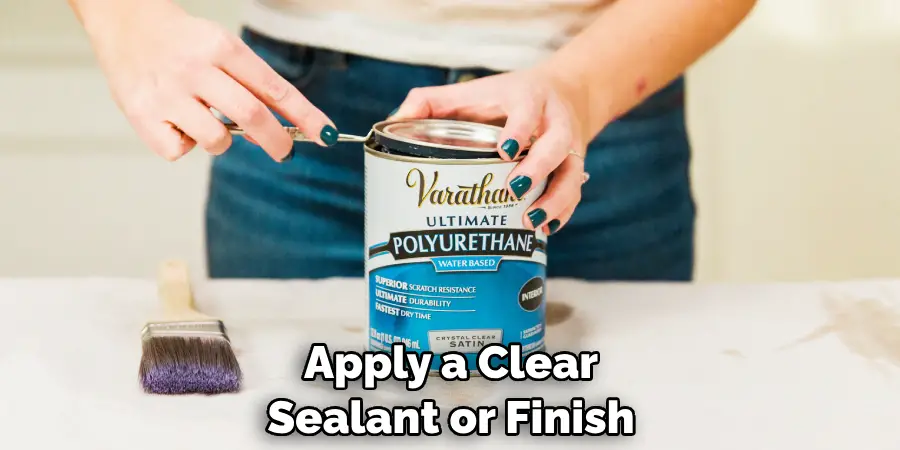
Conclusion
In conclusion, mastering the installation of filler strips on cabinets is a valuable skill that enhances both the functionality and aesthetics of cabinetry. By following the detailed guide provided in this article, DIY enthusiasts can achieve professional-quality results with ease.
From selecting the appropriate materials and tools to ensuring precise measurements and seamless integration, each step contributes to a cohesive and polished look for your cabinets.
Filler strips not only help bridge gaps and create a uniform appearance but also allow for customization and optimization of cabinet space. Thanks for reading, and we hope this has given you some inspiration on how to install a filler strip on cabinets!
Professional Focus
Angela Ervin, a former interior designer turned blogger, specializes in kitchen design and renovations. Through her website, she blends her passion for cooking with design expertise, sharing practical and creative ideas. Known for balancing functionality and beauty, Angela’s insightful content has made her a trusted voice in home design and lifestyle.
About the Author
Angela Ervin, an experienced interior designer and blogger, combines her passion for kitchen renovations with storytelling. Living in Petersburg with her family, she enjoys cooking and testing her projects firsthand. Known for her humor and relatable style, Angela shares creative, functional design insights through her content, making her a trusted voice in home design.
Education History
University: Virginia Commonwealth University
Degree: Bachelor of Fine Arts (BFA) in Interior Design
- Angela’s education at VCU focused on mastering core interior design principles, including spatial planning, color theory, materials selection, and sustainable design practices.
- She gained hands-on experience through studio projects and collaborative design exercises, which honed her ability to create functional and aesthetically pleasing environments.
- Her coursework also emphasized problem-solving and practical applications of design, preparing her for real-world projects like her self-directed kitchen renovations.
- The program’s strong foundation in both technical skills and creative expression shaped Angela’s ability to seamlessly integrate form and function in her work.


